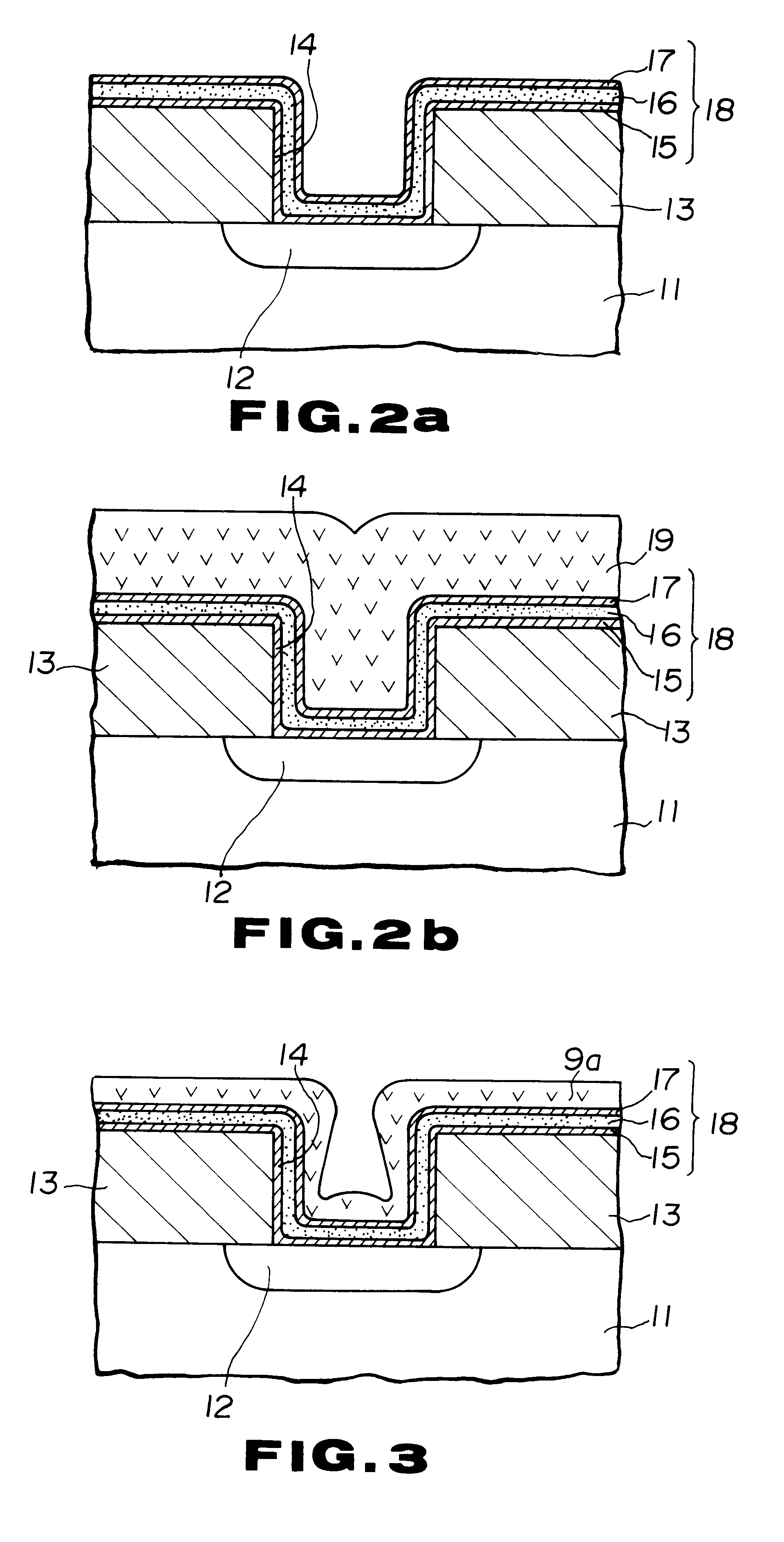Aluminum metallization by a barrier metal process
a technology of barrier metal and aluminum, which is applied in the direction of semiconductor devices, electrical equipment, semiconductor/solid-state device details, etc., can solve the problems of inferior smoothness of the ti layer formed directly on the surface of e.g. a silicon substrate, and achieve superior step coverage characteristics, high reliability and reproducibility, and superior barrier characteristics
- Summary
- Abstract
- Description
- Claims
- Application Information
AI Technical Summary
Benefits of technology
Problems solved by technology
Method used
Image
Examples
example 2
In the present example, the Al-1% Si alloy was buried in the contact hole by two-stage sputtering. This process is explained by referring to FIGS. 2a and 2b and also to FIG. 3.
A wafer similar to that used in FIG. 2a was prepared and subjected to a first-stage sputtering under typical operating conditions of an Ar flow rate of 100 SCCM, a gas pressure of 0.47 Pa (3.5 mTorr), a d.c. sputtering power of 22.5 kW, an RF bias voltage of 0 volts, a sputtering time of 5 seconds and a sputtering rate of 1.2 .mu.m / minute, without heating the substrate. As a result, a first Al-1% Si layer 9a having a thickness of approximately 100 nm was conformally formed after the pattern of the contact hole 14, as shown in FIG. 3.
Then, as a second stage sputtering, the reverse side of the substrate was contacted with a hot Ar gas for heating the substrate to about 500.degree. C., and high temperature bias sputtering was carried out under operating conditions of a d.c. sputtering power of 10.5 kW, an RF bias...
PUM
 Login to View More
Login to View More Abstract
Description
Claims
Application Information
 Login to View More
Login to View More - Generate Ideas
- Intellectual Property
- Life Sciences
- Materials
- Tech Scout
- Unparalleled Data Quality
- Higher Quality Content
- 60% Fewer Hallucinations
Browse by: Latest US Patents, China's latest patents, Technical Efficacy Thesaurus, Application Domain, Technology Topic, Popular Technical Reports.
© 2025 PatSnap. All rights reserved.Legal|Privacy policy|Modern Slavery Act Transparency Statement|Sitemap|About US| Contact US: help@patsnap.com



